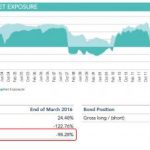It’s the elephant in the room; the guest no one wants to talk to—debt. Total global debt is estimated to be about $217 trillion and some believe it could be as high as $230 trillion. In 2008, when the global financial system almost collapsed global debt stood at roughly $142 trillion. The growth since then has been astounding. Instead of the world de-leveraging, the world has instead leveraged up. While global debt has been growing at about 5% annually, global nominal GDP has been averaging only about 3% annually (all measured in US$). World debt to GDP is estimated at about 325% (that is all debt—governments, corporations, individuals). In some countries such as the United Kingdom, it exceeds 600%. It has taken upwards of $4 in new debt to purchase $1 of GDP since the 2008 financial crisis. Many have studied and reported on the massive growth of debt including McKinsey & Company , the International Monetary Fund (IMF) www.imf.org, and the World Bank.
So how did we get here? The 2008 financial crisis threatened to bring down the entire global financial structure. The authorities (central banks) responded in probably the only way they could. They effectively bailed out the system by lowering interest rates to zero (or lower), flooding the system with money, and bailing out the financial system (with taxpayers’ money).
It was during this period that saw the monetary base in the US and the Federal Reserve’s balance sheet explode from $800 billion to over $4 trillion in a matter of a few years. They flooded the system with money through a process known as quantitative easing (QE). All central banks especially the Fed, the BOJ and the ECB and the Treasuries of the respective countries did the same. It was the biggest bailout in history. As an example, the US national debt exploded from $10.4 trillion in 2008 to $19.9 trillion today. It wasn’t just the US though as the entire world went on a debt binge, thanks primarily to low interest rates that persist today.
So what did it accomplish? Well, the western economies stumbled along through periods of low growth and continue that way today. As economist John Maudin calls it, it is the “muddle through” economy. But if the US and the major western economies (the EU, North America, Japan, Australia) were heavy borrowers the real growth in debt occurred in developing economies such as China and in emerging economies.
In 1989, the US was 61% of the global bond market. By June 2016, the US was only 38% of the global bond market. Emerging markets went from 1% to 18% while developing economies surged from 38% to 45% with China leading the way. Today emerging economy debt along with debt such as China’s threatens the entire global financial structure.














Leave A Comment